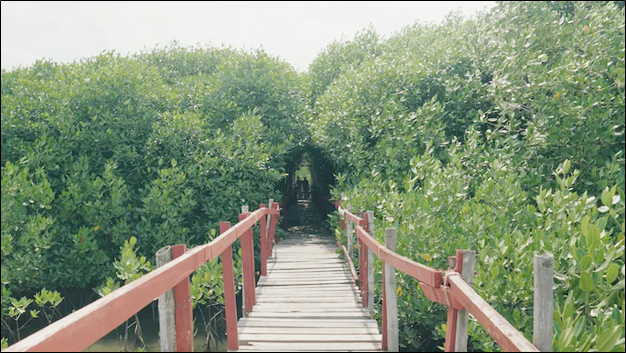
TACLOBAN CITY – Once a shining example of community-led conservation and coastal resilience, the Paraiso Mangrove Eco Learning Park in Barangay 83, San Jose, is now quietly fighting for its survival.
What began as a grassroots initiative to heal ‘Yolanda’-ravaged shores has evolved into a full-fledged marine and wildlife sanctuary — and is now facing slow decline due to underfunding, neglect, and the looming threat of urban development.
After Super Typhoon Yolanda flattened Tacloban in 2013, the shoreline of Barangay 83 was left barren. In response, the community turned despair into action: dead mangroves were processed into charcoal to generate income, which was then used to buy seedlings for a mangrove reforestation project. With support from local government, NGOs, and international organizations, the initiative grew.
By 2016, the community had planted over 10,000 mangrove seedlings across five hectares of shoreline. A cooperative was established — the Paraiso Tacloban Mangrove Eco Learning Park Service Cooperative — composed of volunteers who not only rehabilitated the mangroves but also envisioned the area as an educational, ecotourism, and wildlife refuge.
Today, the park stands as the only mangrove sanctuary of its kind in Tacloban City — a place where visitors, students, researchers, and birdwatchers gather to reconnect with nature.
But the years have taken a toll. Aging boardwalks once used by visitors to walk into the mangrove forest are now rotting and unsafe. Entrance fees — P20 for students and P30 for others — provide only minimal income for maintenance.
“The boardwalk was very popular, especially for photos, but now you can’t even walk there safely,” laments Danilo Elias, 66, a long-time volunteer and one of the park’s most passionate caretakers.
While one path leading to the floating cottages has had partial concrete upgrades, the majority of the infrastructure remains wooden — vulnerable to rot and collapse in the marshy conditions. Several boats are also damaged, and one cottage is now unusable.
“We’ve cemented only half. The rest has to wait until we find more funding,” Elias explains.
In the past, groups like An Waray, the Department of Environment and Natural Resources (DENR), and OISCA International contributed resources and support. But over the past few years, these funding streams have dried up, and the park is now largely reliant on volunteers and meager entrance fees.
“We have so many plans, but without money, we’re left to manage on our own,” Elias says. “We do what we can, but it’s difficult to keep this park alive without real support.”
More worrying than maintenance issues is the ongoing construction of the 2.56-kilometer Tacloban City Causeway, a road embankment and reclamation project that could irreversibly damage the mangrove habitat.
Elias warns that the causeway could pollute the bay, alter marine currents, and disrupt migratory patterns of wildlife.
“The water here is alive. Fish and birds go in and out. If you block that, you change everything. The soil they’re using for the causeway? It’s toxic to shellfish. And nobody’s listening,” he said. “The city doesn’t care.”
Despite everything, Elias remains fiercely loyal to the park. He recalls weddings, birthdays, seminars, and outreach activities held at the site over the years — evidence of the sanctuary’s social value.
“You can see so many creatures here — halu, ibid, sawa, tikarol, tukmo, balinsasayaw, even bukaw. Migratory birds from China come here. White birds, talabong — people from abroad come just to watch them.”
“This is the only place like this in Tacloban. If it disappears, there won’t be another.”
As the mangroves face yet another man-made threat, Elias and his fellow volunteers continue their quiet fight — not just for trees and birds, but for a vision of what community-led environmental protection can truly be.
(JUSTIN ANDRIAN F. POTOLIN, LNU STUDENT INTERN)



